
Russian Empire through the COLOR PHOTOS by Prokudin-Gorsky

Sergei Prokudin-Gorsky (1863-1944) made a revolution in photography - he was the first in Russia to make color photographs. Plus, he invented new methods that made the pictures as lively as possible.
Chemist and photographer
Prokudin-Gorsky belonged to an ancient noble family. Before the 1917 Revolution, he lived in St. Petersburg and earnestly studied chemistry, physics and arts. In the late 19th century, when there was a real photography boom in Russia (one of the most famous photographers was Karl Bulla), Prokudin-Gorsky began his photographic experiments. He studied in Germany for a while under Adolf Miethe, one of the pioneers of color photography, but, after that, he created his own camera for color photos.
 Self-portrait
Self-portrait
Prokudin-Gorsky also applied his knowledge of chemistry - he created and patented more light-sensitive plates that made it possible to take photographs fairly quickly with short exposures. He had three negatives for each photograph, which were passed through three filters - blue, green, and red - in turn for reproduction (so you can often see the colored edges in the photo - layers of overlapping filters).
Photographic chronicle of the whole empire
He left one of the greatest photographic legacies of the Russian Empire. And it is valuable not only in color, but also in the vast geography of his photographs and the widest thematic spectrum. From 1903 to 1916, the photographer tirelessly traveled all over the empire. He took pictures of the Caucasus and Central Asian regions, St. Petersburg and the Urals, the Russian North and Volga Region. He took pictures of ancient churches, the newest industrial objects, portraits of celebrities, scenes from everyday life of ordinary people and many other things.
Prokudin-Gorsky also created a collection of photographs of the main landmarks of the Russian Empire. His work was noticed by Emperor Nicholas II himself and he was commissioned to comprehensively depict life in the empire in all its manifestations. By the highest order, the photographer was provided with a specially equipped train carriage, on which he traveled through Russia, developed photos and made albums. He was also provided with individual steamboats and motorboats on rivers and, in other places, even automobiles, which were rare at the time.
It is believed that he had a total collection of about 3,500 photos, but only 1,902 have survived. Part of the collection was lost after the revolution. Prokudin-Gorsky emigrated to France and took some photos with him, but the Bolsheviks forbade the takeout of about a thousand photos, which were deemed of strategic importance. About 400 more negatives were lost already in France. Prokudin-Gorsky died in 1944 and, several years later, his heirs sold the collection to the United States, where it is now housed at the Library of Congress. In the 2000s, the collection was digitized and uploaded to the Internet for public access.
Here are just a few of his illustrious shots.
People and peoples of the Russian Empire
Leo Tolstoy in his Yasnaya Polyana estate.

Peasant girls with berries in a village near Vologda.

A girl with wild strawberries.

A ‘Sheksna’ steamboat team on the Vytegra River.

Woodcutters on the Svir River near St. Petersburg.

Peasant kids relaxing in Belozersk.

Peasants during harvest.

Lunch break during harvest (Sheksna River).

Sixty-six years in the service. Supervisor of the floodgate at Old Ladoga canal.

Constructors of the railway.

On a draisine near Petrozavodsk.

Prokudin-Gorsky and the Caucasian guards by the railroad.
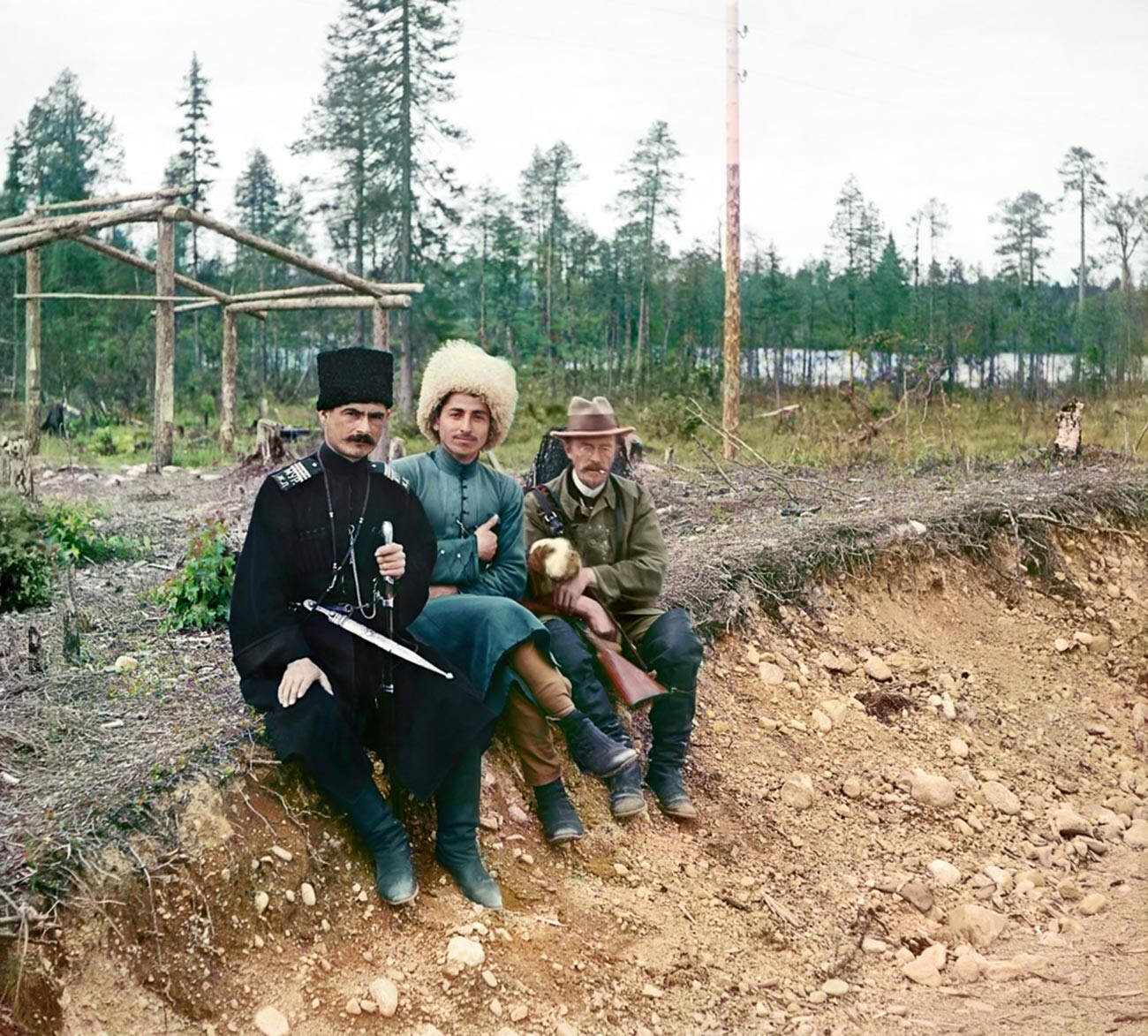
Orphans posing in winter.

Emir of Bukhara (modern-day Uzbekistan).

Flatbreads vendor, Samarkand (modern-day Uzbekistan).

Lezgin in Dagestan.

Avar women of Dagestan.

Cotton caravan in Turkestan (modern-day Turkmenistan).
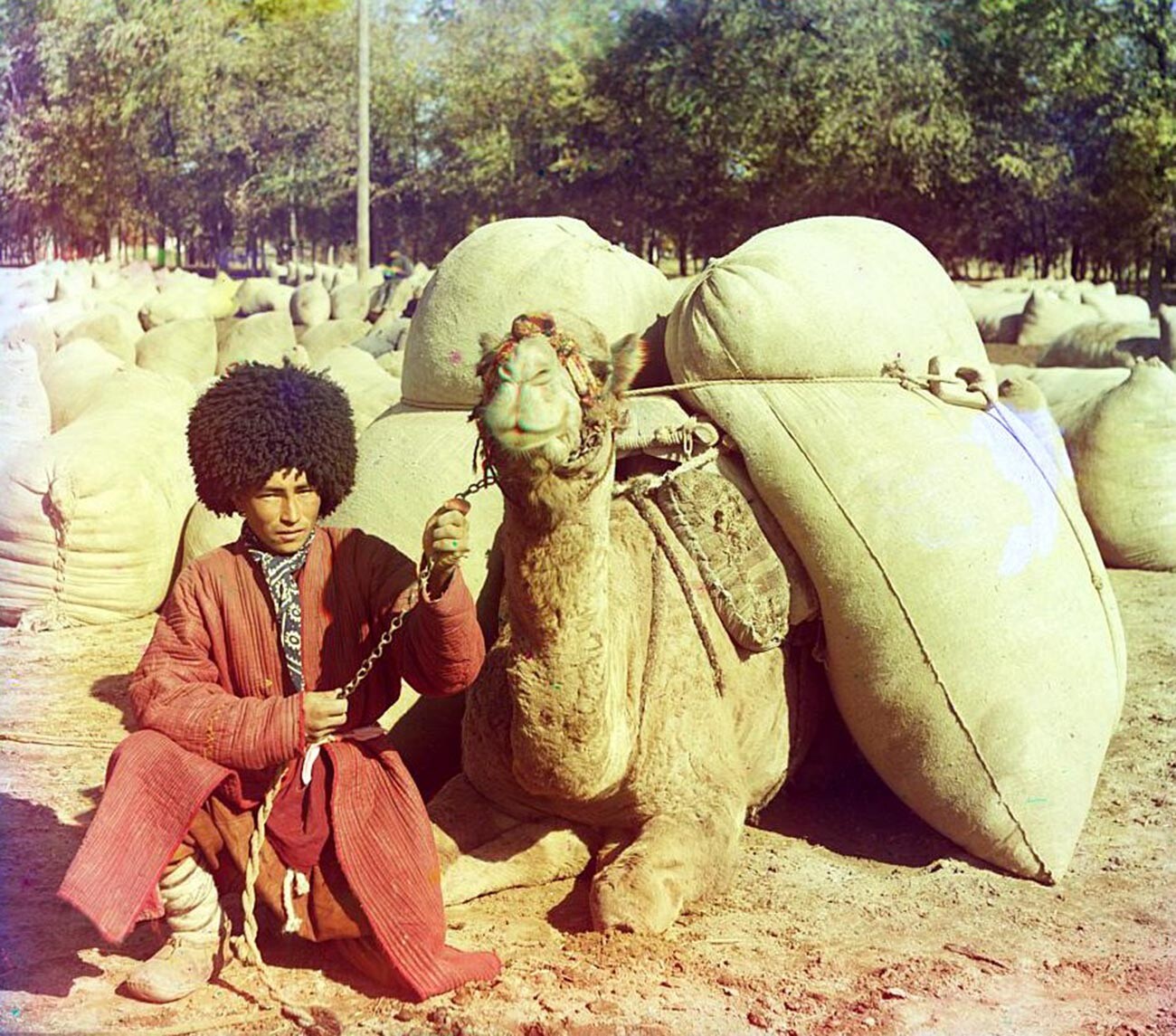
Georgian women in festive dress.

Churches and monasteries
The Church of the Savior on Spilled Blood in St. Petersburg.

Saint Nil Stolbensky Monastery, Lake Seliger.

Detail of the Dmitrievsky Cathedral in Vladimir.

Entrance into the Church of Saint John the Precursor in Yaroslavl.

Trinity Cathedral in Ostashkov.

Solovetsky monastery.

The iconostasis at Borodino Church in Moscow Region.

Entrance to the Resurrection Church in Kostroma.
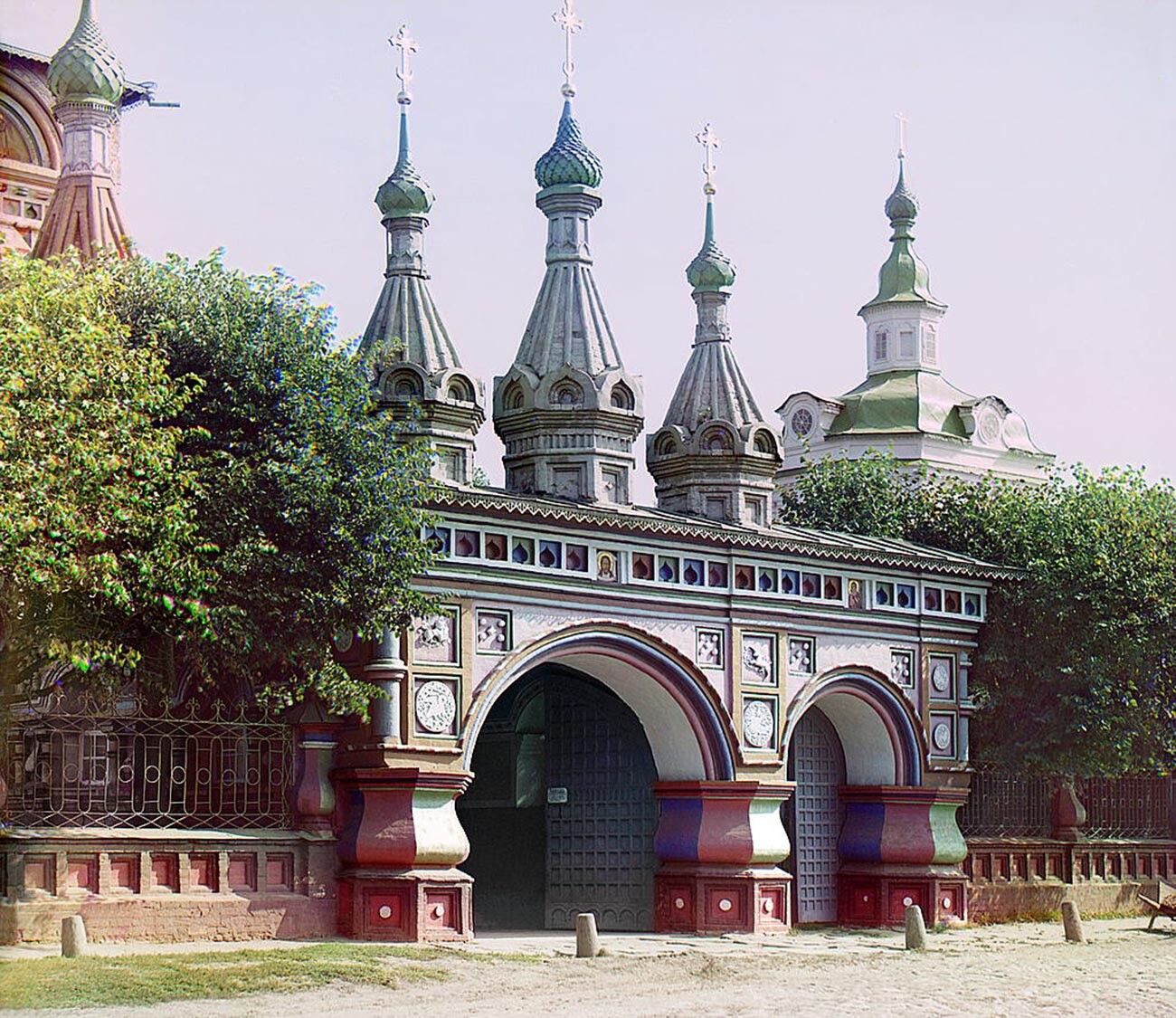
Entrance into the yard of the Saint George Church (Old Ladoga near St. Petersburg).

Cities and landscapes
Former mansion of the grand dukes, today the archbishop’s house in Ryazan.

View on the city of Mozhaisk.

A temporary hut in the Ural mountains.
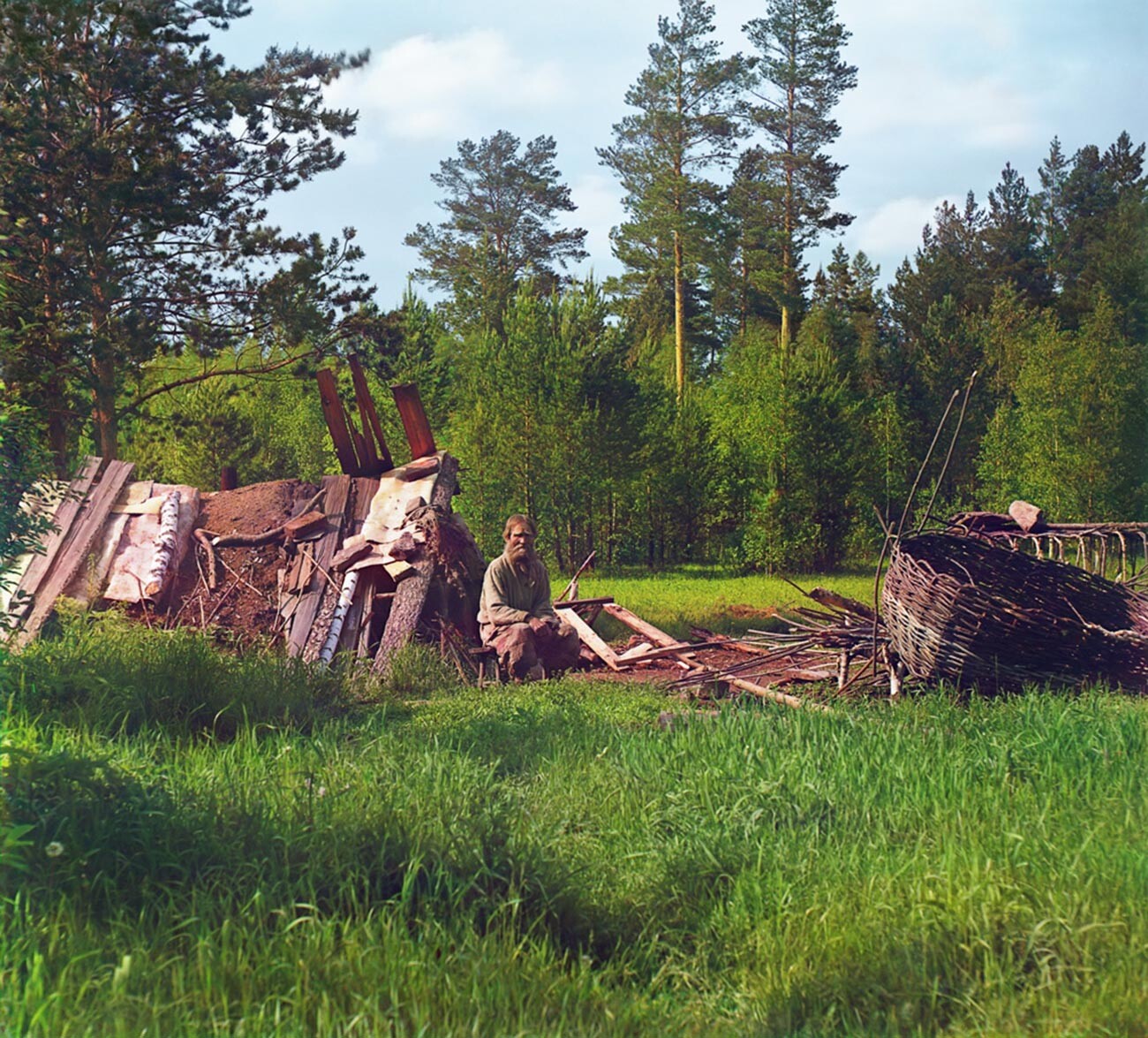
Shakh-i Zindeh necropolis in Samarkand (modern-days Uzbekistan)

A steam locomotive in Perm.

A view on the city of Perm.

Guard dogs resting in the Urals.

Watergates on the Belozersky Canal.

‘Zaplotny’ Rock at the Chusovaya River, the Ural Mountains.

Camping overnight by a rock on the Chusovaya River.

Saimaa Canal between Saimaa Lake (Finland) and the Gulf of Finland (near Vyborg, Russia).

The backwater on the Svir River.

Sluice on the Old Ladoga Canal near St. Petersburg.

Railway bridge over the Kama River in Perm.

At the mouth of the Kem River, Karelia.
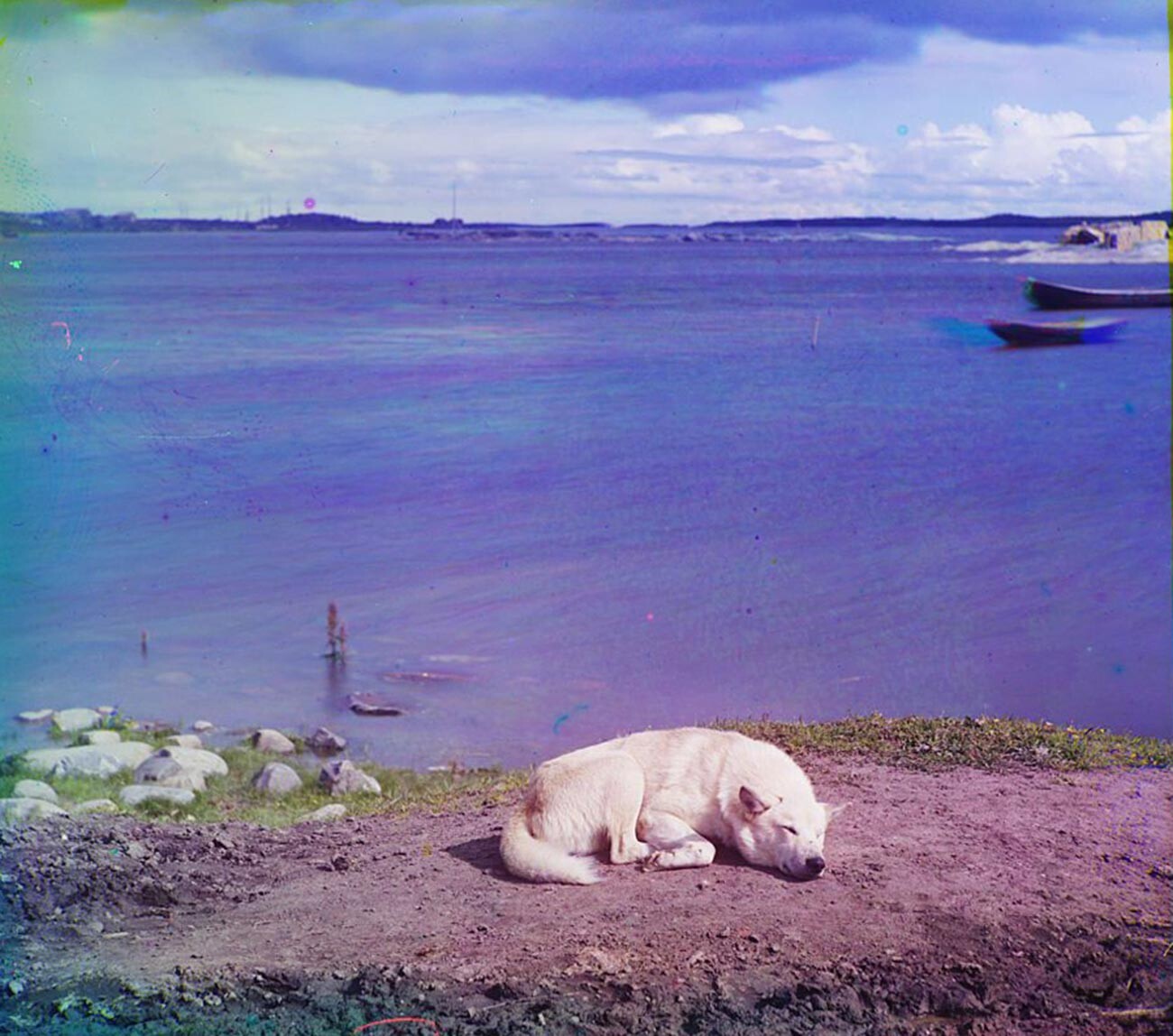
See also: American photographer and architectural historian William Brumfield has been taking pictures of places that Prokudin-Gorsky also captured since the 1970s. He maintains a regular column on our site comparing photographs of a wide variety of sites and churches.













